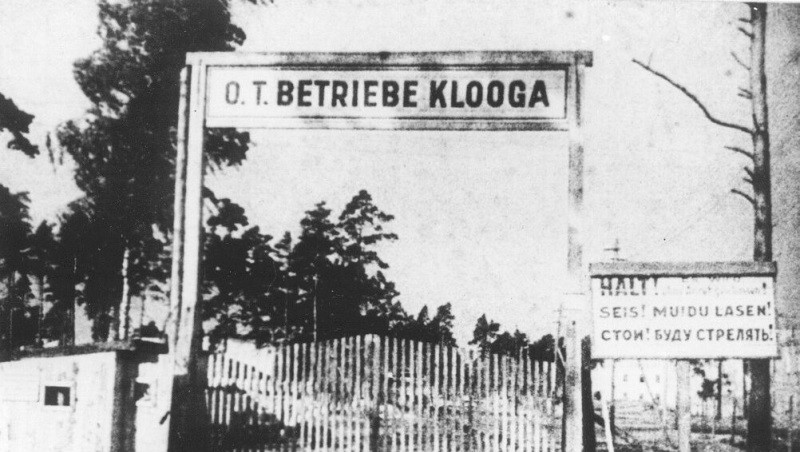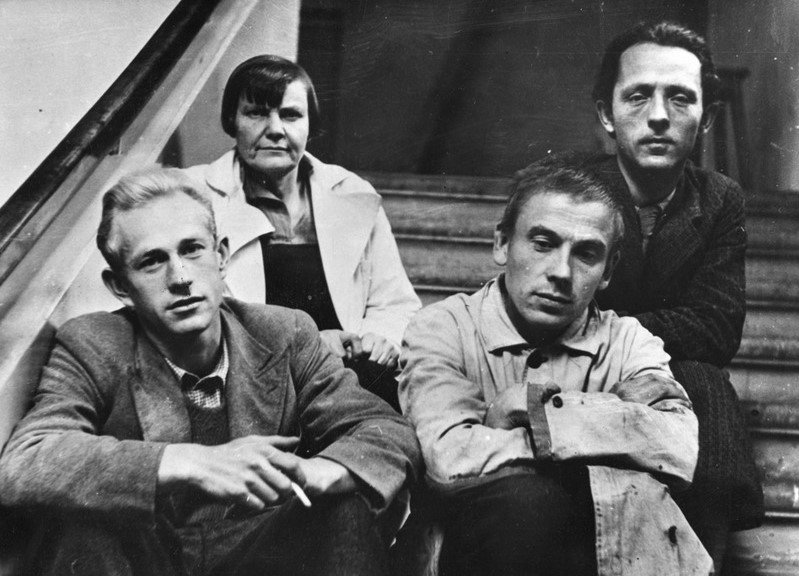Among the 7,000 Estonians murdered by the Nazis was a promising Fauvist painter Karl Pärsimägi.
Education is lacking in some compartments in Estonia. While there’s plenty of information about the Soviet crimes committed during the occupation of Estonia – and justifiably so – there are sadly still many people who consider the Holocaust a “hoax”.
I’m not making this up – I’m shocked each time I meet presumably intelligent and educated people who are in denial about the Holocaust and its true horrors. I put this down to lack of education on the matter and one can only hope the younger generations of Estonians will not be left ignorant about the totalitarian regimes of the past – let it be the Soviets or the Nazis.
From 1941-1944, during the Second World War, when Nazi Germany pushed eastwards as part of its Generalplan Ost, the occupying Soviet Union was forced to retreat from Estonia. Initially, the Germans were perceived by many Estonians as “liberators”, but the reality bit soon. The Germans pillaged the country for their war effort and together with their collaborators, murdered tens of thousands of people – including 7,000 ethnic Estonians.
Removal of 50% of Estonians
Under the Nazi plan, Estonia would have not become an independent state again. Worse still, after the war, under the “Big Plan”, Generalplan Ost foresaw the removal of 50% of Estonians as non-Germanisable people. The remaining ones were to be treated as slaves. If implemented, that plan would have had even graver consequences than the Soviet deportations of 1941 and 1949.
Of course, it wasn’t only Estonians who suffered under the Nazis. During the German occupation of Estonia, the Nazis murdered approximately 1,000 Jews who hadn’t managed to flee Estonia (most had escaped to the Soviet Union or elsewhere before the Nazi occupation) or whom the Soviets hadn’t deported during the first Soviet occupation between 1940-1941. In addition, about 10,000 Jews were transported to the Nazi concentration camps in Estonia from other parts of Europe. Only handful of them survived.
Executed in Auschwitz
The painter, Karl Pärsimägi, was one of the Estonians who died in the hands of Nazis – not in Estonia, but in the Auschwitz concentration camp in occupied Poland. Pärsimägi was one of the 1.1 million people, around 90 per cent of them Jews, who died at the camp.
Pärsimägi was the son of a wealthy farmer. In 1919, he participated in the Estonian War of Independence and was awarded a medal. After that, against his father’s wishes, he went to Tartu to enrol at the Pallas, at the time a pre-eminent modern art school in Estonia.
In addition to the newer styles, such as Fauvism, he found himself influenced by Estonian folk art and by Konrad Mägi, another Estonian painter who was a teacher there. He also studied with Nikolai Triik, an Estonian modernist painter, and, in 1923, made a study trip to Germany. That same year, he held his first exhibition.
 In 1937, he moved to Paris, with the financial support of his father, who had finally become reconciled with his son’s career choice. While there, he studied at the Académie Colarossi and came under the influence of Paul Cézanne. In Paris, Pärsimägi became known as the “Estonian Matisse”.
In 1937, he moved to Paris, with the financial support of his father, who had finally become reconciled with his son’s career choice. While there, he studied at the Académie Colarossi and came under the influence of Paul Cézanne. In Paris, Pärsimägi became known as the “Estonian Matisse”.
At the outbreak of World War II in 1939, he refused to return to Estonia, which was now occupied by the Soviet Union.
If he had thought that Paris would provide him with a safe haven, then sadly, it wasn’t the case. In 1941, he was arrested by the Gestapo – the Nazi secret police – and taken to Auschwitz by way of Drancy internment camp.
The reasons for Pärsimägi’s arrest remain still unclear. One theory is that he had been trying to help a Jewish friend. Another is that he was active in the French resistance movement. A third theory is that he was gay – an estimated 5,000 to 15,000 gays were incarcerated in Nazi concentration camps. In 1942, Pärsimägi was executed in Auschwitz.
Holocaust, or the Shoah, as it’s known in Hebrew, is not a “hoax” – Pärsimägi was one of the up to 17 million victims, including six million Jews, who died in the genocide initiated by the Nazi Germany.
Pärsimägi is still relatively unknown in Estonia. Because of his support for Estonian independence, his works were denied official recognition by the Soviet Union. Since Estonia regained independence in 1991, interest was renewed. The 100th anniversary of his birth was celebrated with an exhibition and many of his works are now at the Tartu Art Museum and few are also on display at the Kumu Art Museum.
Remembering all the victims
The International Holocaust Remembrance Day, 27 January, is a worldwide memorial day for the victims of the Holocaust, the genocide that resulted in the annihilation of six million Jews, two million Gypsies, 15,000 gays and millions of others by the Nazi regime and its collaborators. The date marks the day in 1945, when the largest Nazi death camp, Auschwitz-Birkenau, was liberated by the Soviet troops.
Estonia has been officially observing the International Holocaust Remembrance Day since 2003 and the main remembrance ceremony usually takes place at the site of former concentration camp in Klooga near Tallinn, where 2,000 people were murdered.
Let’s hope that the totalitarian times will never return to Europe.
I
Cover: A fragment of the self-portrait of Karl Pärsimägi (1935/courtesy of Kumu Art Museum). Read also: Remembering the once vibrant Jewish community of Estonia.




